The best camera for video in 2025: find the best model for you
The best camera for video will depend on who you are, what you want to shoot and how much you want to spend
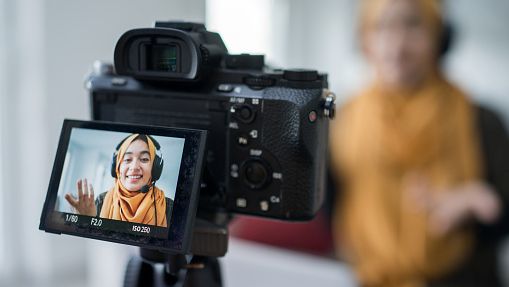
Let's just get this out of the way – there's no objective best camera for video. Which video camera is right for you is going to depend on what you want to shoot it for, not to mention your own experience levels and budget. As such, we've compiled this list of eight very different options to give you as much choice as possible.
A mirrorless camera is a great choice for video, but an action camera can be too. So can a compact camera, a camera phone, or even a drone. Our expert reviewers have tested all of these, and I've aimed to pick the best of each type. They all work in different ways and serve different purposes.
Don't worry though – video doesn't have to be difficult. Don't be put off by all the accessories, technical terms, or complex-sounding techniques. Everyone has to start somewhere, and as long as you're shooting, you're learning. Check out our guide to the best cinema cameras if you want if you're looking for something more high-end – otherwise, let's get started!

Gareth is the Reviews Editor at Digital Camera World, and the person in charge of approving all the latest camera-related tech. With several years of experience as a photographer and videographer, shooting for some household names, he has learned a thing or two about working with cameras and the photography industry. Outside of this, expect to find him cycling around London, or deep in a Netflix binge.
Best camera for video: our top picks
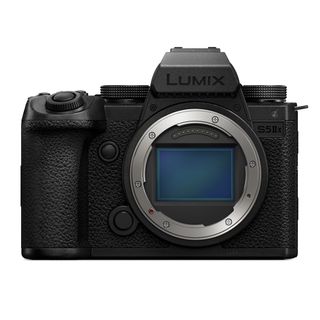
Mirrorless cameras are the most popular choice for serious video shooting – offering you an interchangeable lens system that means you can pick the right lens for what you are shooting.
Read more below
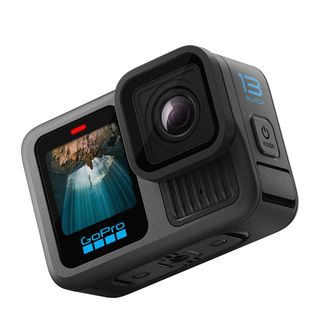
If you're looking for a great camera that can capture all the action on your latest adventures then you really can't beat a GoPro, especially the Hero13 Black, with its high-quality video and modular lenses.
Read more below
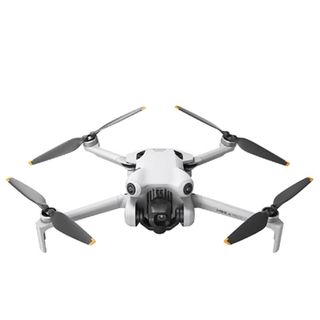
A high-spec camera in a drone small enough to be used safely (and legally) in most places makes this an ideal first drone and often the only one you'll ever need.

The Insta360 'X' series has been refined over several generations, and now is sharp with 8K resolution, snappy and responsive, plus – crucially – easy to use with excellent software that'll suit fun users and serious creators.
Read more below...
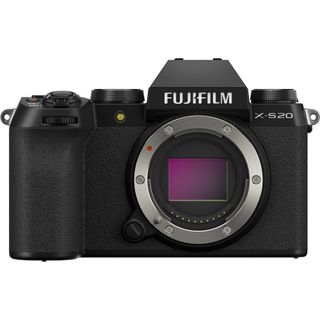
If you want a compact camera that's great for video, but also not too shabby at taking stills either then the X-S20 from Fujifilm is the best versatile camera on this list.
Read more below
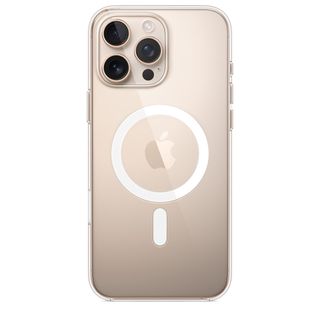
The iPhone 16 Pro Max brings higher frame rates in 4K to the party, while also retaining great video features from previous generations like ProRes recording. It's big and expensive, but worth it.
View more options ↴
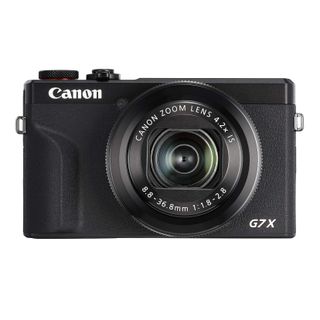
Most cameras can be set up for live streaming, but this Canon compact can do this without the need for a capture card - and unlike your webcam it has a quality built-in 4x zoom.
Read more below
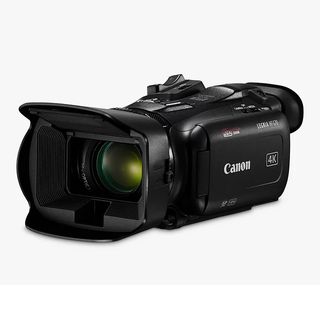
The big advantage of a camcorder is that it comes with a big zoom built-in - making it great for subjects such as sport. Another plus is that the form factor is custom-made for videomaking.
Read more below
Best camera for video
Why you can trust Digital Camera World
Best overall
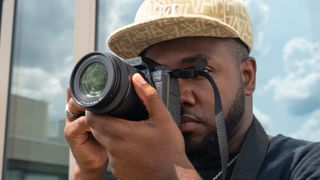

Specifications
Reasons to buy
Reasons to avoid
✅ You want a high-end video camera: With open-gate 6K 30p, 4:2:2 10-bit, LongGOP, SSD recording, HDMI RAW video and streaming capability, this is everything a videographer demands.
✅ You rely on stabilization: When you don't have a gimbal, the incredible in-body image stabilization (up to 6.5 stops) outperforms even higher-specced competition.
❌ You rely on a tally light: A rare miss for the otherwise excellent video features is the lack of a tally light, to indicate when the camera is recording.
Mirrorless cameras are the most popular choice for serious video shooting – offering you an interchangeable lens system that means you can pick the right lens for what you are shooting.
The Panasonic Lumix S5 IIX is our pick for videographers. A successor to the Lumix S5 II, it takes the bones of that hybrid mirrorless camera and adds a suite of video-friendly features. There's an extensive list of recording format options, all with 10-bit colour, as well as a huge choice of compression formats. It can go live anytime, streaming wired and wirelessly, and you can shoot directly to a solid-state drive via USB-C.
As we found in our review, the stabilization on the Lumix S5 IIX is also truly in a class of its own. Sure, conventional wisdom says that video shooters don't really need in-camera stabilization, since they'll always use a gimbal, but if you are caught without one and need to capture run-and-gun footage, the Lumix S5 IIX is capable of providing a level of stability that's not a million miles off.
The hybrid autofocus is also excellent, making use of phase-detection and boasting 779 AF points for speed and accuracy. With the L-mount for lenses, you have a generous choice of Panasonic, Sigma and Leica-made optics – they're not the cheapest, but then again, neither is the Lumix S5 IIX itself.
Essentially, if you can dream it, the Lumix S5 IIX can shoot it, and that makes it a slam-dunk as our pick for the best camera for video overall.
Read our full Panasonic Lumix S5 IIX review.
Best action camera
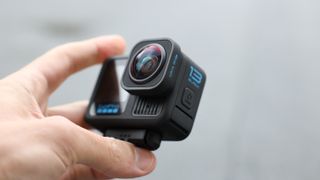
Specifications
Reasons to buy
Reasons to avoid
✅ You share across platforms: If you edit the same clip across platforms the 8:7 sensor will help you
✅ You want cinematic quality: With plenty of recording options and new cinematic lenses, this GoPro is a cut above the rest.
❌ You're on a budget: The new lenses cost extra, and this is the newest GoPro, so you won't find too many discounts.
❌ You want to shoot in low light: Low-light quality is still not the best, with rivals from DJI and Insta360 outdoing GoPro in this area.
Action cams are one of the simplest ways to get into video. While they do let you get granular with video resolution and frame rate, you can also just press a button to record and press it again to stop. What action cams lack in finesse they make up for in immediacy, impact, and their bulletproof go-anywhere attitude – and one name stands above all the others: GoPro.
The GoPro Hero13 Black looks a lot like previous GoPros – and that's a good thing, since they're popular for a reason. It retains the 8:7 format sensor we first saw in the Hero11 Black, producing a near-square video format that's easy to crop into different aspect ratios – grab your 16:9 shot for YouTube, and your 9:16 for TikTok. Easy!
While some might have wanted more resolution than 5.3K, for our reviewers money, keeping the resolution at this level allowed GoPro to offer a good balance of frame rates and recording options that give video shooters plenty of versatility.
The big new feature is the introduction of new modular lenses. You can now buy and attach different lens modules to radically alter the perspective of the footage the Hero13 Black produces – getting away from that distinctive fishbowl action camera look. However, while these are great, they do cost extra, and you could easily end up spending a lot on your Hero13 Black setup.
Read our full GoPro Hero13 Black review for more details
Best for aerial video
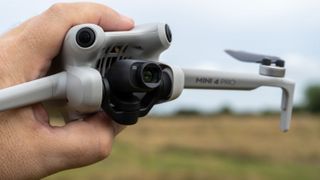

Specifications
Reasons to buy
Reasons to avoid
✅ You want the ultimate power under 250g: The weight limit has a big impact on where you can fly and this drone is the best equipped in the weight category.
✅ You want great range: The excellent range also means control is reliable at more normal distances.
❌ You're looking for the best value: There are a lot of features here, and you can get away with less while still capturing high-quality content.
❌ You want true telephoto: If you want to zoom, then only digital zoom is on offer with this drone.
This drone's predecessor, the DJI Mini 3 Pro, had a massive effect when it arrived in May 2022 – it redefined what DJI was doing with the ultra-light category, bringing some collision sensors and a 4K 60fps camera which could physically rotate to vertical mode (a feature still not equalled by much bigger craft).
Under 18 months later, the Mini 4 Pro finished the job, making the collision sensors omnidirectional (all-round) and adding 10-bit D-Log M video and waypoint programmable flights while keeping under the magic weight. It can also do HDR at a full 60fps rather than the 30fps limit of the Air 3 Pro.
The Mini 4 Pro also sports DJI's updated O4 radio system which offers up to 20km (over 12 miles) of theoretical range or, more importantly, top-notch reception in sensible operational distances. The updated DJI RC 2, as seen with the DJI Air 3, is an option, which feels very pro in hand, giving the choice of a model with a screen to save the (fairly minimal) fuss of connecting a phone). In some markets (start chanting "USA, USA...") there is also a choice of batteries if you don't mind pushing the weight limit, meaning you can go from the already decent 30 minutes to over 40 (again, always take these with a pinch of salt – it depends on conditions and flying style). You should note, though, that the drone will know about the weight change, and can alert authorities.
The message of the Mini 4 Pro is that DJI will not let the weight restriction prevent creatives from achieving their goals. The inevitable downside is the pricing, which is quite a lot closer to the company's higher-end models than other ultralights. If you want to save, there is the less-expensive DJI Mini 3, which lacks the collision sensors and some of the output options, but will capture similar video and stills for the average user.
Read more: DJI Mini 4 Pro review
Best for 360 video
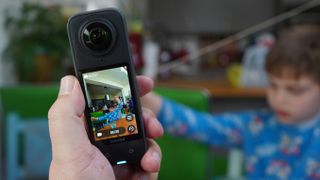

Specifications
Reasons to buy
Reasons to avoid
✅ You want sharp 360 video: The 8K makes for much more flexibility than most other
✅ You want a great all-rounder: The camera is powerful enough to turn itself to nearly any task, including one-camera action camera modes.
❌ You are on a tight budget: There are cheaper options (including the previous generation X3) which still provide a lot of quality.
❌ You want top-notch low-light: With 1/2-inch sensors the HDR is good, but low-light performance is only so-so.
When I tried this camera, I knew immediately it would find itself at the top of this buyer's guide. It's a great choice for people like me (owners of the X3 looking for more resolution and processor power) and an equally sensible choice for anyone getting into 360-degree photography for the first time, whether their goals are serious content creation or fun.
A couple of things set the camera apart. A big one is the Insta360 software, which is comfortably ahead of the offerings from others at the moment. As well as an excellent phone app (iOS/Android), there is an Insta360 Studio for Mac/PC and plugins for Premiere and Final Cut Pro so creating content can happen almost immediately for social, or in careful detail later. The AI subject tracking is excellent too, saving hours in manual keyframing compared to GoPro's offering.
That, though, is available with the X3 too. The headline feature here is the 8K resolution, and the processing power which delivers it. The boost makes for significantly better quality, especially when zooming into video in the edit. It also provides a lot of other upgraded resolutions, like single action camera mode at the crucial 4K60fps threshold, as well as features like bullet time now at 5.7k/120fps.
Other refinements exist too, like the removable lens covers which make the device extra rugged and the ability to connect microphones. All seem to result from a company listening to its customers and making improvements over generations. Whenever improvements suit the users like that things are good (and a word to the wise – this camera's 5-star review was earned in 2024, not 2020).
See my full review of the Insta360 X4
Most versatile camera
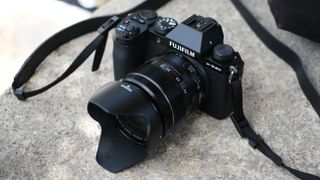
Specifications
Reasons to buy
Reasons to avoid
✅ You shoot a lot of video: the Fujifilm X-S20 is made with video in mind, and offers sensational video quality, with open-gate and codecs for filmmakers, and vlogging modes and vertical video for social creators. The X-S20 is also light and compact, so is perfect for rigs and gimbals.
✅ You want a versatile hybrid camera: the X-S20 isn't just all about video, it offers brilliant stills as well, and with access to Fuji's entire X-Mount range of lenses it is versatile enough to handle everything from landscapes to a safari.
❌ You want big resolution: one of the only real downsides of the X-S20 is its 24MP sensor isn't quite as high as the 40MP sensor found in the X-T5 or X-H2, so if ultimate resolution is your game, then those two cameras might be better choices, although are considerably pricier.
❌ You prefer retro styling: there isn't a retro camera in Fujifilm's range that quite has the same feature set as the X-S20. The X-T5 is the closest, but it is a bigger and more expensive camera. The other retro option – X-T30 II – is aging and can't keep up with the more modern X-S20.
In our field test, the Fujifilm X-S20 proved to be an outstanding camera for a wide range of users. It offers an intuitive and user-friendly experience, with straightforward controls that make it easy for anyone to pick up and start shooting.
The camera's fully automatic modes are impressively effective, allowing even beginners to capture high-quality images and videos effortlessly. Despite its small and compact design, the X-S20 is packed with power, featuring a processor capable of 6K video recording and advanced subject recognition tracking, which is usually found in more expensive models.
This makes the Fujifilm X-S20 an excellent choice for photography enthusiasts, content creators, and vloggers alike, as it caters to various needs with versatility and reliability. While the price is slightly higher than the previous version, the significant improvements and enhanced capabilities justify the cost, offering a mirrorless camera that exceeds the expectations of most users.
Whether you're upgrading from an older model or stepping into the world of mirrorless cameras for the first time, the X-S20 delivers exceptional performance that’s hard to beat.
Read our Fujifilm X-S20 review to find out more
Best phone for video
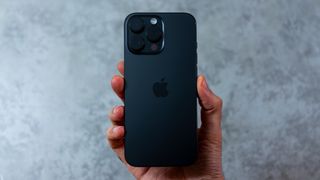
Specifications
Reasons to buy
Reasons to avoid
✅ You want convenience: Your phone is always on you and the iPhone 16 Pro Max has 4K from front and back cameras
✅ ProRes and slow-mo in your pocket: This is the lightest setup with detailed ProRes footage, as well as 4K 120p slow mo.
❌ You're on a budget: While you can soften the blow on contract, this phone is the most expensive in Apple's range
❌ You want to do pro work: Even though iPhone footage has been used in Hollywood, rocking up with one isn't a great look for client work
The debate over whether smartphones can produce professional-grade video footage has long been over – they most certainly can. Movies and TV shows have been shot using iPhones and other smartphones, and while a client may still not be impressed if you show up to a shoot with a phone, the devices we all have in our pockets have proved their mettle for video a thousand times over. If you primarily shoot video for social, it makes sense to do it on a phone for sheer ease, and or our money, the best you'll get is Apple's flagship, the iPhone 16 Pro Max.
With headline stats of 4K and 120fps for its main camera, iPhone 16 Pro Max already sets itself apart from its predecessor, which maxed out at 60fps. This gives you new scope for capturing luscious slow-motion. Elsewhere, once again you can capture and export ProRes footage to maximise detail and quality, and there's also a capable digital zoom in Cinematic Mode.
Video from this phone simply looks brilliant. Our reviewer dinged the latest iPhone on a few points, criticizing its poorly placed Action Button and slightly buggy UX, but he couldn't fault the video. This is the best you'll get in terms of smartphone video right now, and be warned, it's priced as such.
While Android phones are often cheaper, a further benefit of choosing an iPhone for video is that third-party manufacturers prioritize making accessories specifically for them, like cases, gimbals, clip-on lenses and that kind of thing. Plus, because iOS is a single platform, apps like Instagram and TikTok are optimized primarily for it, which generally leads to fewer issues with compression ruining the quality of the content you upload.
For more read our full iPhone 16 Pro Max review.
Best for live streaming
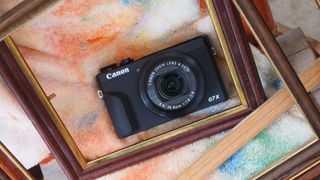
Specifications
Reasons to buy
Reasons to avoid
✅ You want 4K: with its 4K30p this is the perfect camera for those wanting 4K streaming
✅ You want zoom options: with its built-in 24-100mm Equiv lens you can always make sure you;re framed correctly
❌You want to change lenses: while its built-in zoom lens offers a vast zoom range, you can't change it for a faster one
❌ On a budget: for a compact, it is a bit pricey, but it can be used for other things than just streaming
Streaming is become an increaingly popular way shoot and share video. 'Streaming', whether it's to Facebook or YouTube or some other video-sharing platform, is sharing video live, as you shoot it, whether that's out in the field or in front of your computer hooked up to a camera.
Streaming from a phone is the simplest solution, but if you want a proper camera that's easy to carry around, the PowerShot G7 X Mark III is ideal. It was also the first camera of its kind with a microphone input – vital if you want clean audio, not to mention the ability to Livestream straight to YouTube.
This means that even if you’ve got an expensive cinema camera if you also have a G7 X Mark III you can create a fuss-free live setup without any expensive capture cards and a PC. And unlike with mirrorless cameras, the zoom lens is built-in - offering a 4x zoom range at no additional cost.
With its flip-out screen, the G7 X III also gives vloggers a clear view of themselves when they shoot, and thanks to its 20.1MP 1-inch stacked CMOS sensor and DIGIC 8 processor it’s also able to capture great stills, so your custom thumbnails can pop nicely.
Read our full Canon PowerShot G7 X Mark III review for more details | Best cameras for streaming
Best camcorder
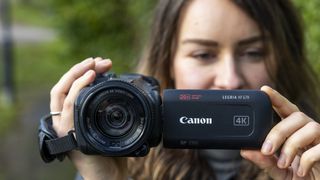
Specifications
Reasons to buy
Reasons to avoid
✅ You want a great zoom: with a 20x zoom this camcorder can capture all the action close up, or far away
✅ You want something that just works: Camcorders are amazing for doing what they do best, recording video
❌You want connectivity: it being of a more traditional design you will have to unload your SD card to a computer
❌Want to shoot photography too: designed for video use only you'll need to carry another camera for photography
Camcorders peaked in popularity in the 1990s, but it is a mistake to think they don't have their advantages for videomaking in the modern era. Unlike mobile phones or mirrorless cameras, camcorders have huge built-in zooms - making them great for shooting sport, wildlife and current affairs. What's more they are designed for the needs of the moviemaker - so the electronic viewfinder and the screen fall naturally to your eye and eyeline.
The Canon HF G70 is one of the best camcorders around right now with an impressive 20x zoom that will take you from 29mm wideangle to 600mm telephoto using the motorized rocker switch so you can frame up each shot as tightly as you need it.
Read our full Canon Vixia / Legria HF G70 review
How to choose the best video cameras
In this guide, we've elected to cover a broad range of camera types, and that's the first decision you're going to have to make when it comes to choosing a video camera. So, let's narrow it down:
Mirrorless cameras are the best general-purpose option for anyone who wants a flexible platform to shoot video. Our top pick, the Lumix S5 IIX is a mirrorless camera, as is the Fujifilm X-S20.
Action cameras excel at capturing footage in extreme conditions, whether underwater, on a muddy racing track, or at the mouth of a volcano! They also excel at capturing POV (point of view) footage as they can easily be mounted to a person or vehicle. The GoPro Hero13 Black is the best around, in our view.
360 cameras, as the name implies, can capture 360-degree footage, which is great for producing VR or interactive 360-degree video. They're quite specialised, but many also offer straight recording options as well.
Smartphones are perfectly capable of capturing brilliant footage these days, and if you're going to be uploading the majority of your content to platforms like TikTok and Instagram, a smartphone can be the ideal way to streamline your workflow.
Compact cameras offer a similar form factor to mirrorless cameras, but with a fixed lens that can't be changed. This means they tend to be simpler, more portable and often cheaper than the combined cost of a mirrorless camera and a lens, with the downside of reduced versatility. Some, like the Canon PowerShot G7 X Mark III, are optimised for vloggers.
Camcorders aren't as popular as they once were, but can still be a cheap and effective way to capture video footage without needing to rely on your phone – and many have big zoom lenses.
Drones, of course, capture aerial footage. While it's unlikely that a drone will be your only or primary video camera, having the capacity to introduce airborne shots into your projects can be a real asset for any videographer.
How we test the best video cameras
We test cameras both in real-world shooting scenarios and, for DSLRs and mirrorless cameras, in carefully controlled lab conditions. Our team of reviewers have tested hundreds of different cameras, of different types - and for us we are looking for great looking video footage, something that is designed well so that its features can be used easily, and something that offers good value compared to its rivals. Our lab tests measure resolution, dynamic range, and signal-to-noise ratio. Resolution is measured using ISO resolution charts, dynamic range is measured using DxO Analyzer test equipment and DxO Analyzer is also used for noise analysis across the camera's ISO range. We use both real-world testing and lab results to inform our comments in buying guides. Action cameras, phones, compacts and camcorders are assessed using our field tests alone, but footage is assessed by our expert reviewers in a variety of different lighting conditions.
Frequently asked questions
Do I need 4K video?
Every camera in this guide is capable of shooting 4K video, with some offering even higher resolutions. 4K refers to the maximum level of detail recorded—roughly 4,000 pixels across, though the exact number varies. While many viewers still watch content on lower-resolution screens, shooting in 4K isn’t essential, but it does offer benefits. Higher resolution gives you more flexibility to crop footage during editing without losing quality and helps future-proof your content as display technology continues to improve.
Some cameras even support 6K recording, capturing nearly 6,000 pixels in width for even greater detail. However, all of these cameras can also record at lower resolutions, such as 1080p (1920x1080) or 2K, which can reduce file sizes and allow for higher frame rates—perfect for achieving smooth slow-motion effects.
Are DSLRs good at shooting video?
Most modern DSLR cameras can shoot video, and the best models do it well. However, due to their design, mirrorless cameras are better suited for video recording, making them the preferred choice for most creators—especially beginners.
Both DSLRs and mirrorless cameras offer the advantage of interchangeable lenses, allowing you to select the perfect lens for your subject. However, this also means the lens is a separate purchase, and in many cases, it can cost as much as the camera body itself.
Isn't my phone good enough to shoot video?
Recent smartphones can capture high-quality video, and some are even used professionally. However, their compact size and shape aren’t ideal for serious videography. They also offer fewer lens options compared to mirrorless cameras with interchangeable lenses or camcorders with powerful built-in zooms, limiting creative flexibility.
You might also like the best laptops for video editing and the best video editing monitor. These are the best video tripods.
Get the Digital Camera World Newsletter
The best camera deals, reviews, product advice, and unmissable photography news, direct to your inbox!

Gareth is a photographer based in London, working as a freelance photographer and videographer for the past several years, having the privilege to shoot for some household names. With work focusing on fashion, portrait and lifestyle content creation, he has developed a range of skills covering everything from editorial shoots to social media videos. Outside of work, he has a personal passion for travel and nature photography, with a devotion to sustainability and environmental causes.
- Hannah RookeFreelance contributor